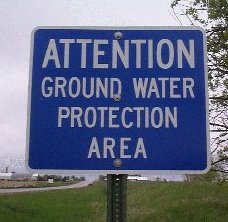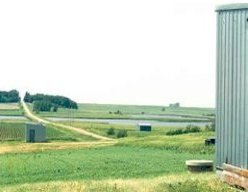| What would we do without good surface water and groundwater? Our use of it in industry, commerce and in our homes is significant, and as communities continue to grow, there is increasing difficulty to meet new demand. There's a need for careful management of this resource and where quality can't be taken for granted, intelligent planning is the only way for water providers to ensure an adequate water supply. |
Source-of-supply investigations
Credible solutions aimed at sustaining potable water resources in urban, rural and industrial settings start with directly relevant science. earth-water Concepts inc. works with industry and communities to develop regional and local water supply plans with solutions to meet the needs for both, short and long-term future growth. See more.
Cooperative management
Water resource planning can be a complex activity because it often includes competing interests, particularly when surface or groundwater resources are limited or where they cross property or political boundaries. Cooperative management tries to achieve effective and equitable systems of water resource management, where the aims and benefits are to: See more.
 We
work with individuals, communities, their representatives, and
planners in an open and transparent manner to develop effective water
resource management policies. We prepare concise information summaries
and conduct educational workshops to make sure everyone
is on an even playing field. We consult with stakeholders. And we work
with
government and others in the scientific community to make sure that
decisions are based
on objective, accurate information, and are achievable in light of
existing or new policies,
for water source exploration, source development,
supply management and protection. and withdrawal permitting.
We
work with individuals, communities, their representatives, and
planners in an open and transparent manner to develop effective water
resource management policies. We prepare concise information summaries
and conduct educational workshops to make sure everyone
is on an even playing field. We consult with stakeholders. And we work
with
government and others in the scientific community to make sure that
decisions are based
on objective, accurate information, and are achievable in light of
existing or new policies,
for water source exploration, source development,
supply management and protection. and withdrawal permitting.
Wellhead protection
The quality of groundwater can be threatened by any number of local or regional land uses and activities in and around the source areas of wellfields. Pollution prevention and groundwater protection are much less expensive than the cost of the remedial actions needed to clean up a contaminated groundwater supply. See more.
 earth-water Concepts inc. can undertake any
size wellhead protection
and aquifer risk assessment project, ranging from simple GUDI well
assessments and correction, to partial data collection, to full
wellfield protection programs tailored to meet specific site needs,
which may include some or all of the following:
earth-water Concepts inc. can undertake any
size wellhead protection
and aquifer risk assessment project, ranging from simple GUDI well
assessments and correction, to partial data collection, to full
wellfield protection programs tailored to meet specific site needs,
which may include some or all of the following:
Credible solutions aimed at sustaining potable water resources in urban, rural and industrial settings start with directly relevant science. earth-water Concepts inc. works with industry and communities to develop regional and local water supply plans with solutions to meet the needs for both, short and long-term future growth. See more.
A source of supply analysis involves
working closely with municipal,
industrial, and other project planners, preferably at the early stages
of the client-project design, and looks at all possible water sources
within geographic areas of interest and rates them based on:
- possible source yield and reliability,
- water quality and treatment viability, as necessary,
- ability to protect the source and associated costs and
benefits,

- infrastructure required for supply development, and
- lowest delivery cost.
Cooperative management
Water resource planning can be a complex activity because it often includes competing interests, particularly when surface or groundwater resources are limited or where they cross property or political boundaries. Cooperative management tries to achieve effective and equitable systems of water resource management, where the aims and benefits are to: See more.
- involve users so they can work toward finding common ground
and learn to manage the water supply for the benefit of all,
- improve education and local knowledge, and use that
knowledge in both short and long-term decision making, and
- improve enforcement and reduce enforcement costs by
empowering local communities.
 We
work with individuals, communities, their representatives, and
planners in an open and transparent manner to develop effective water
resource management policies. We prepare concise information summaries
and conduct educational workshops to make sure everyone
is on an even playing field. We consult with stakeholders. And we work
with
government and others in the scientific community to make sure that
decisions are based
on objective, accurate information, and are achievable in light of
existing or new policies,
for water source exploration, source development,
supply management and protection. and withdrawal permitting.
We
work with individuals, communities, their representatives, and
planners in an open and transparent manner to develop effective water
resource management policies. We prepare concise information summaries
and conduct educational workshops to make sure everyone
is on an even playing field. We consult with stakeholders. And we work
with
government and others in the scientific community to make sure that
decisions are based
on objective, accurate information, and are achievable in light of
existing or new policies,
for water source exploration, source development,
supply management and protection. and withdrawal permitting.
Wellhead protection
The quality of groundwater can be threatened by any number of local or regional land uses and activities in and around the source areas of wellfields. Pollution prevention and groundwater protection are much less expensive than the cost of the remedial actions needed to clean up a contaminated groundwater supply. See more.
 earth-water Concepts inc. can undertake any
size wellhead protection
and aquifer risk assessment project, ranging from simple GUDI well
assessments and correction, to partial data collection, to full
wellfield protection programs tailored to meet specific site needs,
which may include some or all of the following:
earth-water Concepts inc. can undertake any
size wellhead protection
and aquifer risk assessment project, ranging from simple GUDI well
assessments and correction, to partial data collection, to full
wellfield protection programs tailored to meet specific site needs,
which may include some or all of the following:- desktop reviews of local and regional surface features,
topography, surficial and bedrock geology, and other important site
information,
- inventory or possible point and non-point pollution sources,
- aquifer vulnerability determinations using GIS (geographic
information system),
- wellhead protection area delineation groundwater modelling,
and
- planning, management and training services that aid in the
deployment of proper land use and contingency activity for the
protection of water supply systems.
Drought planning
The strategic importance of water for industrial use, potable use, and food security will probably intensify under climate change as more frequent and intense climate extremes increase variability in precipitation, surface water availability, and groundwater recharge. Drought planning can help water users adjust for and prosper in these situations. See more.
 The mechanics of drought planning typically involve associating
historic watershed, aquifer and supply reservoir performance to climate
change projections, thus allowing predictions to be made about
reservoir replenishment, groundwater source
recharge, drought risk, and ways to mitigate their effects. We can help
industry and community water providers create comprehensive drought
plans by analyzing new or existing water supplies, identifying source,
watershed, aquifer and reservoir vulnerabilities, and proposing changes
to
reservoir design and management, aquifer and watershed management,
water usage and other drought procedures.
The mechanics of drought planning typically involve associating
historic watershed, aquifer and supply reservoir performance to climate
change projections, thus allowing predictions to be made about
reservoir replenishment, groundwater source
recharge, drought risk, and ways to mitigate their effects. We can help
industry and community water providers create comprehensive drought
plans by analyzing new or existing water supplies, identifying source,
watershed, aquifer and reservoir vulnerabilities, and proposing changes
to
reservoir design and management, aquifer and watershed management,
water usage and other drought procedures.
Demand/supply analysis
Adequate supplies of clean water can provide the foundation for strong economies, healthy ecosystems, and a high quality of life. For this reason, large water users and water providers need to understand where their water supplies can adequately meet peak, seasonal, and long-term demand, and where they may not. See more.
 In
rapidly growing communities, it is critical to
know what future demand may be, how well supply can match that demand,
and what
regulatory or natural constraints may exist on the changes and growth
in demand. These can all affect the requirements for capital
investment,
operating budgets, and pricing structures needed to sustain those water
supplies as related to changing economies, and nature.
In
rapidly growing communities, it is critical to
know what future demand may be, how well supply can match that demand,
and what
regulatory or natural constraints may exist on the changes and growth
in demand. These can all affect the requirements for capital
investment,
operating budgets, and pricing structures needed to sustain those water
supplies as related to changing economies, and nature.
Our strength lies in our use of GIS technology and our ability to fully incorporate watershed and aquifer modeling to ensure proper watershed capability, water demand, and supply analysis. In the process, we define the adequacy of existing or proposed surface source reservoirs or wellfields to meet water-user needs, and identify the reservoir improvements, or wellfield management changes needed to ensure that water systems can meet both short and long-term water use needs. for small and medium-sized communities and industry. This information allows our clients - small and medium-sized communities, industry, and other large water users - to better prepare for and to budget properly for growth, while also ensuring that increased in water demand remain sustainable.
Wellfield optimization
It makes little sense to spend large sums of money to remedy low production by simply adding more wells, or to correct poor quality water by adding costly and often unnecessary treatment, when instead, spending less, but spending it more wisely, on proper wellfield operating techniques can overcome many of these difficulties. See more.
 The
primary goals of a properly optimized and managed wellfield are to
maximize water production while also increasing well lifespan and
reducing power, operating, and treatment costs for the delivery of high
quality drinking water. Achieving these goals requires having a clear
understanding
of the aquifer, recharge, the nature and degree of well interference,
and water quality variability across the wellfield as it relates to
natural geologic and seasonal changes, and individual well pumping
rates.
The
primary goals of a properly optimized and managed wellfield are to
maximize water production while also increasing well lifespan and
reducing power, operating, and treatment costs for the delivery of high
quality drinking water. Achieving these goals requires having a clear
understanding
of the aquifer, recharge, the nature and degree of well interference,
and water quality variability across the wellfield as it relates to
natural geologic and seasonal changes, and individual well pumping
rates.
By analyzing well and wellfield production information through a combination of groundwater and statistical models, earth-water Concepts inc. can recommend how a wellfield should be operated to maximize capacity and water quality, thus reducing the need for treatment and delaying or avoiding costly well field expansion or well replacement.
The strategic importance of water for industrial use, potable use, and food security will probably intensify under climate change as more frequent and intense climate extremes increase variability in precipitation, surface water availability, and groundwater recharge. Drought planning can help water users adjust for and prosper in these situations. See more.
 The mechanics of drought planning typically involve associating
historic watershed, aquifer and supply reservoir performance to climate
change projections, thus allowing predictions to be made about
reservoir replenishment, groundwater source
recharge, drought risk, and ways to mitigate their effects. We can help
industry and community water providers create comprehensive drought
plans by analyzing new or existing water supplies, identifying source,
watershed, aquifer and reservoir vulnerabilities, and proposing changes
to
reservoir design and management, aquifer and watershed management,
water usage and other drought procedures.
The mechanics of drought planning typically involve associating
historic watershed, aquifer and supply reservoir performance to climate
change projections, thus allowing predictions to be made about
reservoir replenishment, groundwater source
recharge, drought risk, and ways to mitigate their effects. We can help
industry and community water providers create comprehensive drought
plans by analyzing new or existing water supplies, identifying source,
watershed, aquifer and reservoir vulnerabilities, and proposing changes
to
reservoir design and management, aquifer and watershed management,
water usage and other drought procedures.
Demand/supply analysis
Adequate supplies of clean water can provide the foundation for strong economies, healthy ecosystems, and a high quality of life. For this reason, large water users and water providers need to understand where their water supplies can adequately meet peak, seasonal, and long-term demand, and where they may not. See more.
 In
rapidly growing communities, it is critical to
know what future demand may be, how well supply can match that demand,
and what
regulatory or natural constraints may exist on the changes and growth
in demand. These can all affect the requirements for capital
investment,
operating budgets, and pricing structures needed to sustain those water
supplies as related to changing economies, and nature.
In
rapidly growing communities, it is critical to
know what future demand may be, how well supply can match that demand,
and what
regulatory or natural constraints may exist on the changes and growth
in demand. These can all affect the requirements for capital
investment,
operating budgets, and pricing structures needed to sustain those water
supplies as related to changing economies, and nature.Our strength lies in our use of GIS technology and our ability to fully incorporate watershed and aquifer modeling to ensure proper watershed capability, water demand, and supply analysis. In the process, we define the adequacy of existing or proposed surface source reservoirs or wellfields to meet water-user needs, and identify the reservoir improvements, or wellfield management changes needed to ensure that water systems can meet both short and long-term water use needs. for small and medium-sized communities and industry. This information allows our clients - small and medium-sized communities, industry, and other large water users - to better prepare for and to budget properly for growth, while also ensuring that increased in water demand remain sustainable.
Wellfield optimization
It makes little sense to spend large sums of money to remedy low production by simply adding more wells, or to correct poor quality water by adding costly and often unnecessary treatment, when instead, spending less, but spending it more wisely, on proper wellfield operating techniques can overcome many of these difficulties. See more.
 The
primary goals of a properly optimized and managed wellfield are to
maximize water production while also increasing well lifespan and
reducing power, operating, and treatment costs for the delivery of high
quality drinking water. Achieving these goals requires having a clear
understanding
of the aquifer, recharge, the nature and degree of well interference,
and water quality variability across the wellfield as it relates to
natural geologic and seasonal changes, and individual well pumping
rates.
The
primary goals of a properly optimized and managed wellfield are to
maximize water production while also increasing well lifespan and
reducing power, operating, and treatment costs for the delivery of high
quality drinking water. Achieving these goals requires having a clear
understanding
of the aquifer, recharge, the nature and degree of well interference,
and water quality variability across the wellfield as it relates to
natural geologic and seasonal changes, and individual well pumping
rates.By analyzing well and wellfield production information through a combination of groundwater and statistical models, earth-water Concepts inc. can recommend how a wellfield should be operated to maximize capacity and water quality, thus reducing the need for treatment and delaying or avoiding costly well field expansion or well replacement.




